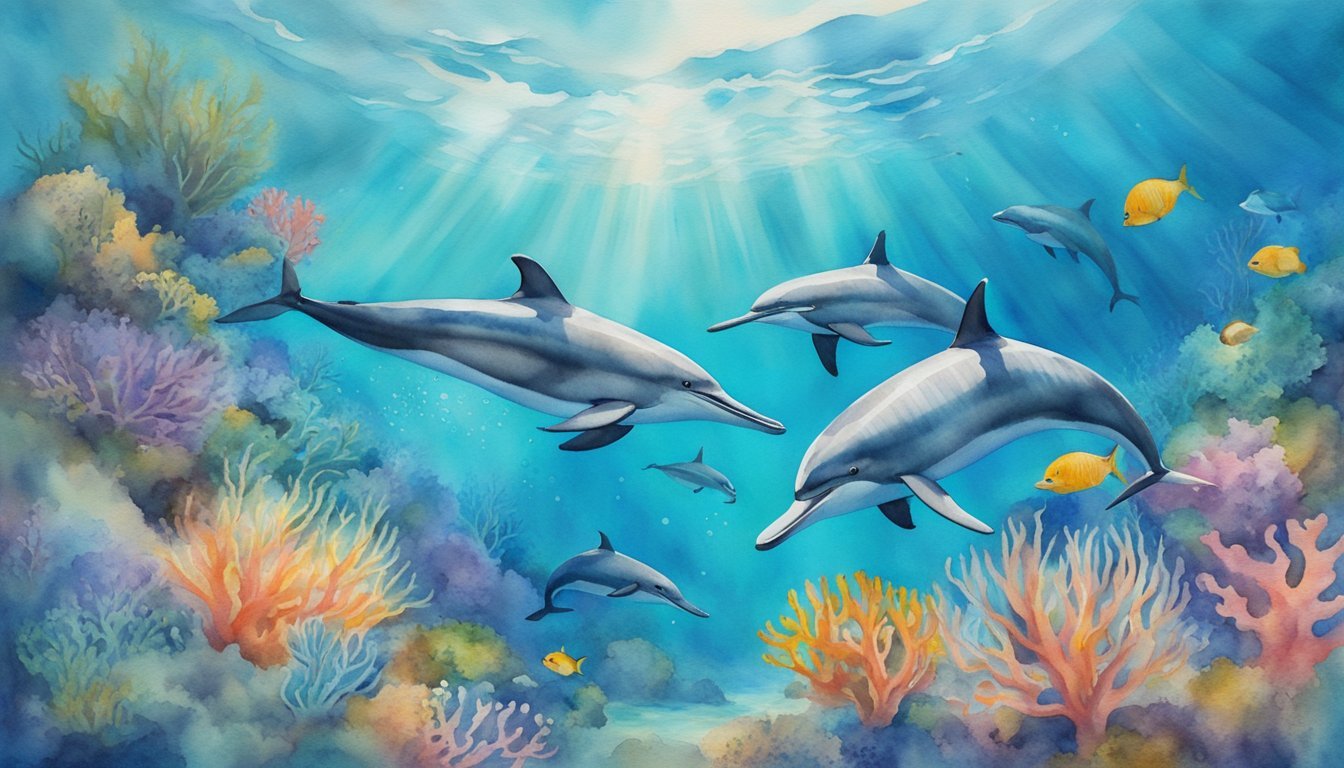Understanding Spinner Dolphins
Spinner dolphins are a captivating species recognized for their acrobatic displays and widespread presence in tropical ocean waters. This section uncovers their classification, physical features, unique behaviors, as well as their habitats, and intricate feeding patterns.
Scientific Classification
The spinner dolphin is scientifically referred to as Stenella longirostris. Part of the family Delphinidae, the species’ name, longirostris, is derived from Latin, indicating the dolphin’s notably long beak.
Physical Characteristics
Adult spinner dolphins can reach a size of up to 2.3 meters and weigh as much as 79 kilograms. Their bodies are streamlined and slender, with color patterns varying by region, but typically displaying a tripartite scheme with dark gray backs, lighter flanks, and a white or pale underbelly.
Distinctive Behaviors
Aptly named, spinner dolphins are famous for their spinning behavior, where they leap out of the water and make multiple quick rotations around their longitudinal axis before landing. These captivating spins are a mode of communication and may also serve as a way to dislodge parasites.
Habitats and Distribution
The spinner dolphin inhabits warm tropical and subtropical waters, with significant populations found in the Pacific Ocean, notably around Hawaii, the Eastern Tropical Pacific, and the Indian Ocean. They are also prevalent along coastal regions including Central America.
Diet and Feeding Habits
Spinner dolphins maintain a varied diet mainly comprising squid, fish, and shrimp. They are known to hunt collectively in schools, often pursuing prey like yellowfin tuna and mesopelagic fish into the night, utilizing the advantages of the food-rich twilight zone.
Conservation and Coexistence

Ensuring the survival of spinner dolphins requires understanding the challenges they face and the influence of human activities on their habitats. Effective conservation hinges on striking a balance between human interests and the health of marine ecosystems.
Threats and Challenges
Spinner dolphins, a charismatic cetacean species, are subject to numerous threats in their marine environment. Coastal development and pelagic fishing practices pose significant risks, which often lead to habitat loss and negative encounters with fishing gear. The accidental capture of dolphins in nets, known as bycatch, remains a pressing issue. Predators like sharks are natural threats, but human-induced challenges have escalated to a point where intervention is necessary.
Human Interaction and Impact
In regions with heavy boating traffic, spinner dolphins frequently encounter boats, which can lead to collisions and disturb their natural behaviors. Constant exposure to humans can have adverse effects on their daily routines, including their rest and foraging behaviors. Community engagement and education are keys to fostering coexistence between humans and these marine inhabitants.
Conservation Efforts
Conservation measures, including the creation of regulations that limit close human interaction with spinner dolphins, aim to protect and sustain their populations. Organizations like NOAA Fisheries actively promote guidelines to reduce human impact. These regulations include approach distances to ensure that spinner dolphins can carry out critical behaviors without disturbances.
Research and Understanding
Ongoing research contributes to the understanding of spinner dolphin behaviors and their conservation status. Through studies, researchers can establish areas critical to spinner dolphin survival and advocate for their protection. The Pacific Whale Foundation and similar entities conduct research that informs conservation strategies and highlights the importance of safeguarding their habitats.

